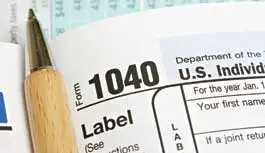Taxes
Everything individuals and businesses need to know about filing tax returns, reducing tax bills, and avoiding or preparing for an audit.
-
Rules for Deducting Prepaid Business Expenses
Make sure you understand the rules if you want to prepay and deduct business expenses.
-
Running a business from home can help you lower your tax bill.
-
Top 7 Tax Deductions for 2023-2024
Here are the top personal deductions for individuals.
-
Tax Returns: If You Haven't Filed in a While FAQ
Answers to frequently asked questions about failing to file tax returns.
-
If you can pay your debt over time, an installment plan may be the right solution.
-
Using an Offer in Compromise to Settle a Tax Bill
How to settle a tax bill with the IRS using an offer in compromise.
-
Top Ten Tips for Surviving an Audit
Convince the IRS you were entitled to the credits, deductions, and exemptions you took.
Talk to a Tax Attorney
Need a lawyer? Start here.
How it Works
- Briefly tell us about your case
- Provide your contact information
- Choose attorneys to contact you
More Legal Topics
- Bankruptcy
- Business Formation: LLCs & Corporations
- Car Accidents
- Criminal Law
- Debt Management
- Disability Law
- Divorce & Family Law
- DUI / DWI & Traffic Tickets
- Employment Law
- Foreclosure
- Immigration
- Landlords & Tenants
- LGBTQ Law
- Nonprofits
- Patent, Copyright & Trademark
- Personal Finance
- Personal Injury
- Real Estate & Rental Property
- Renters' & Tenants' Rights
- Small Business
- Small Claims Court & Lawsuits
- Social Security & Retirement
- Wills, Trusts & Probate
- Workers' Compensation Laws
- Bankruptcy
- Business Formation: LLCs & Corporations
- Car Accidents
- Criminal Law
- Debt Management
- Disability Law
- Divorce & Family Law
- DUI / DWI & Traffic Tickets
- Employment Law
- Foreclosure
- Immigration
- Landlords & Tenants
- LGBTQ Law
- Nonprofits
- Patent, Copyright & Trademark
- Personal Finance
- Personal Injury
- Real Estate & Rental Property
- Renters' & Tenants' Rights
- Small Business
- Small Claims Court & Lawsuits
- Social Security & Retirement
- Wills, Trusts & Probate
- Workers' Compensation Laws
Talk to a Tax attorney.
How It Works
- Briefly tell us about your case
- Provide your contact information
- Choose attorneys to contact you
